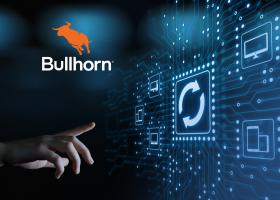2021 Business Technology Trends to Watch

While the impact of COVID-19 has affected businesses’ budgets for traditional HR technology, many have shifted to other technologies to support remote work. A recent study showed that 15% of businesses are opting to reduce budgeting for traditional HR technology in the New Year, 28% plan to redirect those funds to nontraditional HR technology, such as remote work tools and infrastructure.
According to a 2019 Gallagher survey, many companies have shifted from HR technology that emphasized recruiting features to payroll, timekeeping, employee engagement, and performance management features. This is a direct impact of the uptick in remote workers.
Looking at 2021, there are some business technology trends you should watch.
People Management
A recent survey showed that businesses who were prepared for crises, including role and skills-based data for essential positions, processes, and technologies in place to support quick changes to organizational goals and employee-centric, and accounting best practices were able to adapt better to the COVID-19 impact by effectively navigating difficult workforce decisions.
As demonstrated through proper talent management, organizations who invested in essential roles and technology framework to support them reaped greater successes. Organizations implemented pandemic-specific talent management initiatives, including:
- Expanding and enhancing remote work, such as employee tracking, communications technology, company policies, and social governance models
- Flexible compensation models for bonuses, cuts, and freezes
- Amenable work schedules and arrangements to support employee health and safety
Technology Upgrades
Technology that can collect, organize, and analyze data will play a critical role in training and development efforts. For example, utilizing skills-based data can provide insight into current industry demands (i.e., specific staffing needs), as well as predict industry trends (i.e., automation of administrative roles). Having the ability to see where skill gaps occur can lead to streamlining hiring, developing proper training, and tailoring specific skill sets.
A recent study showed that 37% of respondents were assessing or contemplating learning, workforce management, and recruiting system replacements. Because COVID-19 expedited those decisions – so businesses could comply with specific safety requirements (i.e., contact tracing, workplace safety), many are now looking to upgrade their system(s) to include time-tracking and scheduling features. Fourteen percent of organizations, especially those utilizing on-premise systems, are looking to migrate to new, cloud-based time management systems within the next two years.
Workforce Planning
At the core of adapting to economic and organizational changes is workforce planning.
- Strategic workforce planning involves developing responsive processes across a variety of scenarios. These scenarios may include acquisitions and mergers and different rates of growth. Businesses should aim to develop workforce planning to support three to five years minimum.
- Operational workforce planning involves determining workforce planning technology platforms and tools needed to support the various scenarios involved in the strategic workforce planning, as well as prepare diverse contingency strategies.
The Sapient Insights Group 2020-2021 HR Systems Survey provided a drastic increase from 2019’s results (36%) of organizations utilizing workforce planning in 2020. This significant increase could be impacted by leveraging workforce data and tools to guide leaders in strategizing effective workforce plans in unprecedented times and actively practicing continuous change management. However, HR experts are warning that to effectively lead continuous change, businesses need to step away from a compliance-focused approach. Business discussions need to implement utilizing technology and data to develop more informed business decisions, rather than simply discussing budgets and using data solely for compliance purposes.
Any investment in technology can be overwhelming for business owners as finding an HR software that checks all the boxes, learning the new technology, and investing in the software can be costly and time-consuming. That’s why businesses entrust VensureHR. Vfficient is our cloud-based human resource management technology carefully constructed to manage payroll, human resources, and employee benefits from one platform. VensureHR’s technology is supported by a team of experts to provide training, address any questions or concerns, and troubleshoot issues in real-time.













Comments